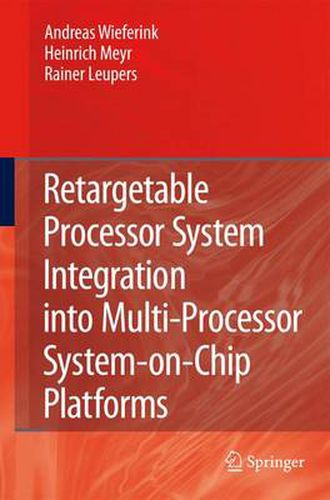Readings Newsletter
Become a Readings Member to make your shopping experience even easier.
Sign in or sign up for free!
You’re not far away from qualifying for FREE standard shipping within Australia
You’ve qualified for FREE standard shipping within Australia
The cart is loading…






This title is printed to order. This book may have been self-published. If so, we cannot guarantee the quality of the content. In the main most books will have gone through the editing process however some may not. We therefore suggest that you be aware of this before ordering this book. If in doubt check either the author or publisher’s details as we are unable to accept any returns unless they are faulty. Please contact us if you have any questions.
Computerarchitecturepresentlyfacesanunprecedentedrevolution: Thestep from monolithic processors towards multi-core ICs, motivated by the ever - creasingneedforpowerandenergyef ciencyinnanoelectronics. Whetheryou prefer to call it MPSoC (multi-processor system-on-chip) or CMP (chip mul- processor), no doubt this revolution affects large domains of both computer science and electronics, and it poses many new interdisciplinary challenges. For instance, ef cient programming models and tools for MPSoC are largely an open issue: Multi-core platforms are a reality - but where is the software support (R. Lauwereins, IMEC). Solving it will require enormous research efforts as well as the education of a whole new breed of software engineers that bring the results from universities into industrial practice. Atthesametime,thedesignofcomplexMPSoCarchitecturesisanextremely time-consuming task, particularly in the wireless and multimedia application domains, where heterogeneous architectures are predominant. Due to the - ploding NRE and mask costs most companies are now following a platform approach: Invest a large (but one-time) design effort into a proper core - chitecture, and create easy-to-design derivatives for new standards or product features. Needless to say, only the most ef cient MPSoC platforms have a real chance to enjoy a multi-year lifetime on the highly competitive semiconductor market for embedded systems.
$9.00 standard shipping within Australia
FREE standard shipping within Australia for orders over $100.00
Express & International shipping calculated at checkout
This title is printed to order. This book may have been self-published. If so, we cannot guarantee the quality of the content. In the main most books will have gone through the editing process however some may not. We therefore suggest that you be aware of this before ordering this book. If in doubt check either the author or publisher’s details as we are unable to accept any returns unless they are faulty. Please contact us if you have any questions.
Computerarchitecturepresentlyfacesanunprecedentedrevolution: Thestep from monolithic processors towards multi-core ICs, motivated by the ever - creasingneedforpowerandenergyef ciencyinnanoelectronics. Whetheryou prefer to call it MPSoC (multi-processor system-on-chip) or CMP (chip mul- processor), no doubt this revolution affects large domains of both computer science and electronics, and it poses many new interdisciplinary challenges. For instance, ef cient programming models and tools for MPSoC are largely an open issue: Multi-core platforms are a reality - but where is the software support (R. Lauwereins, IMEC). Solving it will require enormous research efforts as well as the education of a whole new breed of software engineers that bring the results from universities into industrial practice. Atthesametime,thedesignofcomplexMPSoCarchitecturesisanextremely time-consuming task, particularly in the wireless and multimedia application domains, where heterogeneous architectures are predominant. Due to the - ploding NRE and mask costs most companies are now following a platform approach: Invest a large (but one-time) design effort into a proper core - chitecture, and create easy-to-design derivatives for new standards or product features. Needless to say, only the most ef cient MPSoC platforms have a real chance to enjoy a multi-year lifetime on the highly competitive semiconductor market for embedded systems.